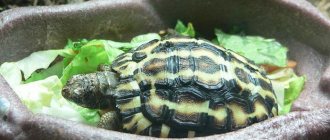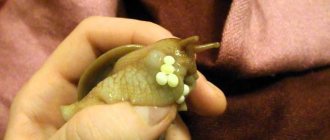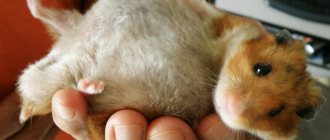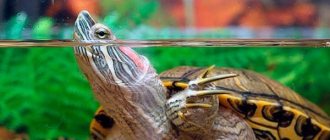Brief description of the order of turtles
These animals belong to the order of reptiles. They live in captivity up to 50 years. But in the natural environment they can exist about twice as many. Although there are legends that there are individuals that have reached 350 years or more. But only the lifespan of the Madagascan radiant tortoise Tui Malila is documented - 188 years. Today she is considered a long-living winner.
A distinctive feature of all types of turtles is the presence of a shell. Perhaps, thanks to him, they managed to survive, despite various disasters that occurred on our planet. After all, these creatures are very ancient.
Mating games
Turtles are no strangers to demonstrative displays of affection. Males become very active during the mating season. Many people make the mistake of considering turtles to be silent creatures. After all, males, when courting their darlings, often make sounds similar to yapping. And females have the right to express their opinion with their voice.
Usually males challenge rivals to fights. And during the period of “fighting”, weak animals can be injured and die. So it would be a huge mistake to consider turtles as calm and good-natured animals.
The male is not so loyal to his chosen one either. Seeing a female, it begins to shake its head up and down. But he does not intend to wait for her to reciprocate her feelings. Having performed a ritual dance of recognition, the male runs to the turtle and hits it hard with his head in the shell. In addition, he bites the reptile's paws until it is eventually subdued.
Marital advances
The male shows greater interest in the opposite sex if his chosen one is conquered in battle. During the period of sexual activity, turtles show great mobility; it would be rash to call them silent and slow creatures.
During the mating season, the male, seeing the object of “his admiration,” pulls his head out of the shell and swings it up and down, demonstrating his loyalty and favor. Then he approaches the female and hits his head on the shell, biting its edges, trying to touch her head. Sometimes he bites his chosen one on the paws.
When courting a female, the male usually makes sounds reminiscent of the yelping of a puppy. The female can answer him with an inviting “singing”. If she tries to evade marital duty, the male bites her paws until she submits and accepts him.
In sea turtles, the courtship ritual is somewhat different: the male swims up to the chosen companion and tickles her neck with the claws of his front paws or hits her with his shell, showing his location. Mating games can last for several days.
This is interesting: During turtle fights, males behave aggressively and fight tooth and nail. The result may be the death of the weakest opponent.
Video: mating games of red-eared turtles
Mating process in nature
First of all, it should be clarified that the genital organs of turtles are located in the tail. Therefore, the male approaches the chosen one from behind and crawls onto her back with the front part of his body. He adapts his tail under hers, directing the sexual organ to the right place.
At the end of the action, the male emits a “victory cry”. And let only his chosen one hear it, but this is the song of a winner who has achieved his goal. The female also responds to him with a “yelp.” This is how turtles mate in nature.
Mating of land turtles in captivity
This species of reptile reproduces both in nature and in captivity. Since land turtles mate in natural conditions only when they have to fight for the female, there must be at least two males in captivity in order to determine the winner in a battle. Otherwise, interest in the female will simply be lost.
Determining the sex of a reptile can be difficult. But upon careful examination and comparison of different-sex individuals, it is clear that there are still differences. For example, the claws on the limbs of males are longer and harder than those of females. The ventral side of the “guy’s” shell is concave, and the femoral spurs are massive. The tail is longer, rounded and wider at the base, because it contains the genitals. The shell covers it with itself.
When keeping these reptiles, it is very important to know whether the land turtle is already sexually mature. How old is she when she mates? The answer will be: a female individual must reach the age of ten. The male at this moment must be at least five years old.
Breeding problems
Any turtle breeder faces breeding problems. The most common mistakes are:
unfertilized eggs. In the absence of males, turtles lay “empty” eggs. Only after copulation does conception and successful laying occur;
failure to maintain humidity and correct air temperature in the terrarium;
the absence of mating games negatively affects the interest of males in young females. The partner must win the female, become the winner and receive the desired prize;
a poor diet and lack of vitamins also negatively affect the offspring.
Mating process in red-eared turtles
This is a freshwater animal. Red-eared turtles live in nature in dirty, swampy reservoirs and ponds. Moreover, males are smaller than females.
There are two answers to the question at what age red-eared turtles mate. Readiness for the mating season of individuals of both sexes in nature is achieved by six years. But at home, females mature at five years old. Males become sexually mature by their fourth birthday.
Reproduction under natural conditions lasts throughout the spring, starting at the end of February. Directly in the water, the “groom” places himself in front of the “bride’s” head, and they swim in parallel. Only he periodically makes a backward movement, touching the chin of the individual he likes with his claws. To lay eggs, the female chooses dry land, where she digs a nest.
How do red-eared turtles mate in captivity? They also do this in the water.
For the breeding process you need to have several females. They only need one male. During marriage, the future daddy becomes very active. With his shell he touches the back of the selected turtle and tickles it with his paws.
The chosen one and the hero are placed in a separate vessel. The act lasts for a quarter of an hour. Comfortable water temperature is +25 degrees. It should be poured no higher than 12 centimeters, since the “bride” will need to breathe.
Then both are returned to the common aquarium. After some time, the male begins to court another female, and the process is repeated.
This is how land turtles and red-eared turtles mate.
How long does pregnancy last
After successful fertilization, pregnancy of red-eared turtles occurs, which lasts about 60 days. When keeping a male together, it is better to delay this period in order to avoid harm to the health of the mother and future turtles. The female is transferred to enhanced nutrition. The reptile must receive calcium, phosphorus and vitamins. Towards the end of pregnancy, the female will pick up food or refuse to eat at all, which should not be a reason for panic.
In their natural habitat, freshwater reptiles come to land to lay eggs in heated sand. For a pregnant turtle kept at home, it is recommended to place a deep container filled with 10-15 cm of sand on the shore of the aquarium. The animal can lay eggs in the water, but if the owner does not get them out within an hour, the embryos will die from lack of air.
Immediately before laying, the pregnant turtle begins to dig the nest with its hind limbs, forming a deep hole with a perfectly level entrance. Laying eggs lasts 5-20 minutes, the female straightens each egg with her hind legs. The eggs of red-eared turtles look like balls with a diameter of 3-4 cm with a soft leathery shell; in one clutch the animal can lay about 5-20 eggs. Having laid eggs, the reptile carefully buries the nest, wets it with urine and forgets about its young forever. Further care for the babies falls on the shoulders of the future owners of the turtles.
How do turtles mate at home?
The red-eared (aka yellow-bellied) turtle is one of the most popular pets. Many owners of these wonderful reptiles are thinking about breeding them. The reasons for this are very different: someone wants to increase the number of pets without buying them, but by raising them themselves from birth to adulthood.
Some are thinking about starting to sell grown turtles, others plan to give them to friends and acquaintances. The motives can be very different, but people often make the same mistakes. To avoid them, you need to know a few key things (this is the bare minimum):
- What conditions should be created for the breeding of turtles?
- How to determine their gender
- How do turtles mate in captivity?
- What to do with eggs. Egg incubator.
- How to care for newborn turtles and what to feed them.
If a person has decided to breed turtles , we can assume that he already knows the basic things: how to set up an aquaterrarium, what to feed the pets, how often to change the water, etc. If anyone still has doubts about how properly organized the “living space is” “for your favorite reptiles, but you don’t want to re-read a huge amount of material, then it’s easy to find short but informative videos on the Internet about how everything should be arranged.
It is important to understand that the conditions necessary for turtles to survive and grow may not be sufficient for them to reproduce. What do you need to consider to make everything work?
Terrarium
Some believe that you can keep a reptile in a regular cardboard box. It's a delusion. In order for your pet to feel as comfortable as possible, he needs to create all the necessary conditions. For these purposes, only a terrarium with high walls (about 1 meter) can be suitable. You should pour fairly coarse sand at the bottom, and make a small canopy out of fabric or cardboard in the corner. Such living conditions are the most natural for these animals. The terrarium must be equipped with heating, ventilation and lighting systems. Since many species of turtles require ultraviolet radiation, it is recommended to install UV lamps along with conventional lamps. They should be placed at a distance of at least 60 centimeters from the location of the reptile. Small ventilation holes should be made in the walls and on the lid of the terrarium. For aquatic turtles, you need to build a small pond at the same level as the floor. It is very useful to place young individuals of freshwater species in an aquarium with water for some time. It should be regularly replaced with fresh, settled one.
Necessary nuances
In males, puberty occurs earlier around the fifth year of life, while in females in the sixth year. Many people either don’t know this difference or forget about it. Naturally, in this case nothing happens.
If there are several turtles, then it is better when there is one male for several females . This will help avoid conflicts between “boys” and possible injuries. You can understand what sex a reptile is no earlier than it is one year old. Males are smaller in size, but have larger claws and tails. The lower part of the shell also helps to understand the gender - in boys it has a very noticeable “dent”.
Turtle Eggs: Differences and Fertility
Turtle eggs can be of different shapes (from round to oval) and different sizes, but have a typical structure for all turtles. The eggs of most land turtles and some freshwater turtles (for example, the European marsh turtle) have a hard and fragile shell, like chicken eggs. In most aquatic and some land (genus manouria) the shell is not fragile and leathery.
Egg fertilization
Turtles, like birds, can lay fatty or unfertilized eggs even in the absence of males. If you only have one female and she laid eggs, then they are unfertilized (fatty). Nothing will ever hatch from such eggs. Female turtles found in the wild during the summer are most likely pregnant, so their eggs must be incubated.
Care of masonry and newborns
Red-eared turtles lay their eggs in sand or soil . It is better not to leave the clutch unattended: leaving everything as is, it is more difficult to control development and increases the risk of losing all the eggs. They may be accidentally damaged by the turtles themselves, or mold may develop on the eggs.
It is best to transfer the eggs to an incubator . This must be done extremely carefully, trying not only not to damage, but not even to turn them. Some experts advise marking the top surface of the eggs with a marker, which makes it easier to control their position.
The temperature in the incubator is set between 21–30 degrees . Changes are unacceptable, so I did not want to place the incubator in a place that would not allow:
- exposure to direct sunlight
- drafts
Development of the embryo lasts from two months to six months . After the babies hatch, they must be “separated” from the adult turtles. If it is not possible to place them in a separate aquaterrarium, you need to at least fence off a separate area for them inside the main one. In order for the “young animals” to grow and develop normally, it is necessary to periodically allow them to “warm up” under the rays of UV lamps.
The ideal food for newborn red-eared turtles is raw, lean fish. To ensure that the food is balanced, it is worth periodically feeding the babies with special food for newborn turtles.
How do red-eared turtles reproduce at home?
Red-eared turtles are very popular among reptile owners. Reproduction of these animals at home requires knowledge of the basic rules and recommendations for their breeding. It is known that the sexual activity of turtles kept in captivity is at a low level, which is why offspring are extremely rare.
The poor birth rate of this species of reptile is also explained by the incompetence of the owners regarding how red-eared turtles reproduce and the inability to create suitable conditions for this.
Determining the sex of turtles (male or female?)
In all turtles, sex is established when the egg is formed. In some species of turtles it depends on the incubation temperature. But most often, sex is determined in turtles when they become sexually mature based on secondary sexual characteristics. This usually occurs in nature at the age of 6–8 years, at home at the age of 2–5 years and the shell length is 9–11 cm. The larger the turtle, the longer it takes to grow and reach puberty. It is most convenient to determine sex in comparison with other turtles. Turtles living in captivity become sexually mature faster than those living in the wild.
There are several other methods, but they are used quite rarely. This is the determination of hormones in a blood test, radiography, ultrasound. On x-rays you can see the bones of the hemipenis (in some monitor lizards and geckos). Ultrasound is often uninformative due to the small size of the testes and ovaries. The female can be recognized by ultrasound during the formation of follicles. Analysis of hormones is informative in sexually mature individuals, but there are fluctuations in the level of the hormone depending on the mating season (during the rutting period, testosterone levels increase sharply).
Determination of gender
To ensure reptiles reproduce at home, it is necessary to find out which sex each turtle belongs to. Obviously, the offspring is the result of the mating of a male and a female.
This is interesting: A female reptile can lay eggs without the participation of a male, but storing them will not give any results, since fertilization in this case was not carried out.
Sexual dimorphism in red-eared turtles appears at one year of age. For comparison, it is recommended to take reptiles of the same age. The distinction between individuals is carried out according to the following criteria:
- body size (females are larger);
- claws on the front paws (in males they are longer);
- tail (longer in males than in females);
- the shape of the lower part of the shell (in females it is flat, in boys it is concave).
The difference between a male and a female
Aquatic turtles do not have external sexual characteristics, so for beginners there are certain difficulties in determining the sex of pets. To establish the sex of reptiles, it is recommended to carry out simultaneous comparisons based on the following characteristics:
- Length and shape of the shell. Males have a smaller and narrower shell than females. The lower part of the shell of boys has a concave surface, and that of girls has a flat surface.
- Tail length and cloaca shape. Males differ from females in having a longer tail, which has a cloaca in the lower third in the form of a longitudinal stripe. Females are characterized by a short, graceful tail, at the base of which is a star-shaped cloaca.
- Length of claws. Nature has endowed male freshwater turtles with long, sharp claws, which are found only on the forelimbs of males.
After determining the sex of your pets, you can begin breeding red-eared turtles. To obtain turtle offspring, you must have at least one opposite-sex pair of reptiles at home, or better yet, several girls and one or two boys.
Conditions for mating
Reproduction of the red-eared turtle is possible subject to the optimal age for mating - individuals must be young, but at the same time have reached sexual maturity. The readiness of females to reproduce is observed at the age of five, males begin to give birth to offspring in the fifth year of life. If you keep more than two turtles at the same time, it is advisable that there is only one male among them, otherwise the males will fight for the opportunity to mate, causing injury to each other.
Pond slider
Differences in the character of males and females
Behavior during the mating season clearly demonstrates the difference in temperament between individuals. If girls are characterized by a calm state and moving within the aquarium only when necessary, then males show aggression. In order to attract the attention of the opposite sex, they begin:
- chase turtles;
- bite females on the neck;
- make a squeak.
The last sign does not provide a guarantee - some girls are capable of imitating this sound, which introduces uncertainty. In childhood, they can imitate flirting with their claws and bite other individuals.
To prove his own strength, the male shows aggression towards his aquarium neighbors, provoking fights. They begin with a flip onto the shell and strikes with the paws. Sometimes there are attempts to bite competitors on parts of the body that are not covered with a hard shell (hind legs, tail, neck), which leads to severe, life-threatening injuries.
Preparation
Getting red-eared turtles to breed in captivity is quite a difficult task. To achieve the desired result, you first need to take care of your pets’ diet. Reptile food should include vitamins and nutrients. Vitamin E is especially useful for males, as it has a positive effect on the reproductive function of animals. Calcium and phosphorus are useful for the normal course of pregnancy in females.
Before the intended mating, two turtles need to be placed in different aquariums. To create a suitable environment, it is recommended to change the water and heat it to 25 o C. It happens that during the mating process, the male does not allow the female to come to the surface for a long time. To prevent the reptile from suffocating, the water level in the aquarium should not exceed 10 centimeters. A container with sand must be placed inside the vessel, where the female will lay eggs.
It should be located in a dry area that is easily accessible to the turtle. Please note that mating will only occur if there is soil in the aquarium. A sign indicating that the female is ready to reproduce is the reptile displaying high activity, as well as its refusal to eat.
Diet of the red-eared slider
We have come to a very important topic - how, when and what to feed our charges. Oddly enough, these are predators; not a single turtle will refuse a piece of raw meat
They also really love bloodworms and just granular food for turtles. It is necessary to mark the fish separately:
- To eliminate calcium deficiency, feed fish with bones. You don’t have to worry, everything is designed for the animal in such a way that she will never choke on a bone;
- Try to avoid fatty fish such as capelin, mackerel, sprat. In any case, don't overuse it.
Turtle eats bloodworm
It is very important that the food is varied. For example, if a turtle is raised on meat alone, it will inevitably develop rickets
With this disease, the shell of red-eared turtles softens, appetite disappears, and coordination of movements may even be impaired. They urgently need vitamin D. If left untreated, the shell will take on a dome-shaped shape under its own weight.
Advanced form of rickets in a turtle
But let's get back to food. Young individuals require more animal food; with age, it will be necessary to give preference to a plant diet. Until the age of two years, we feed once a day, not more often. After two years of age, 2-3 feedings per week are sufficient.
If possible, place food on an island so that the water stays clean longer. But, on the other hand, this is ineffective, because the turtles will still drag everything into the water.
Diseases of the red-eared turtle
The red-eared slider requires no less grooming than any other pet. They may experience the following diseases:
- Pneumonia, also known as pneumonia. The most visible symptom is that the turtle cannot dive, no matter how hard it tries. At the same time, she is lethargic and does not eat well. This happens from hypothermia. To treat, hold the turtle over the steam of a chamomile decoction, but at a distance so as not to burn it (check with your own hand). At the same time, the water in her aquarium at home should also be heated to 28 degrees;
- Eye disease. Swollen eyelids, inflamed eyes. For treatment, isolate the turtle from other animals (the disease is contagious); during the entire period of treatment, it should only be on land. You can only immerse it in warm (up to 28 degrees) water for a couple of hours, no more. Apply eye antibiotic drops to the infected eye three times a day until the disease subsides (about 3 days);
- Soft shell. Yes, you are already familiar with this disease - it is rickets. Also, the softness of the shell, but to a lesser extent, can develop from ultraviolet deficiency;
- Skin disease. Exposed areas begin to peel off. As a rule, there can be many reasons, ranging from mechanical damage, and also depends on age. But there is still a very high probability that the animal’s vitamin balance is disturbed, especially vitamin A and vitamin B. Add vitamin supplements to the diet (be sure to read the instructions before use!).
Determining the sex of an individual
We left the most interesting thing for last - how to determine whether you bought a girl or a boy? We can only find out with age: boys have longer claws on their front paws, a longer tail, and a more elongated face.
Determining gender by claws
Fun fact - when the female lays eggs, the embryos are not sexed. The mother does not have the instinct to care for the clutch; she leaves and does not return. While the turtles develop inside the egg, their sex directly depends on the air temperature - if the temperature is below 27 degrees, then the entire clutch will consist of boys, but if above 30 degrees, only girls. If the temperature is between 27 and 30 degrees, the floor will be mixed.
And remember - we are responsible for those we have tamed!
How do turtles mate?
Domestic keeping does not imply that the breeding season depends on the changing seasons, so reptiles can mate at any time. According to general observations, turtles are most active from February to May. Thus, the process of mating pets is best carried out at this time.
Until the moment of copulation, reptiles engage in mating games, which can last for several days in a row. During this period, the most important thing is to create the most comfortable conditions for the animals, ensuring them complete peace. Reptiles should not be disturbed by extraneous noise, vibration or bright light. Also, you should not pick up your pets during this time.
The process of mating games is that the male touches the female’s head with his claws and brings his shell into contact with the female’s plastron. The copulation time of reptiles is no more than five minutes. Then eggs are laid.
Caring for eggs and young
In one clutch the female leaves from 6 to 10 eggs. The diameter of each is 4 cm. The container in which the masonry is located is emptied. The eggs are very carefully transferred to the incubator without turning them over. The temperature in it should be in the region of 25-30 o C. Instead of an incubator, you can use a regular jar of sand, which should be placed next to the heating system to create optimal temperature conditions.
The period of development of the young inside the egg is 2-5 months. All this time it is necessary to maintain the established temperature indicators. As soon as the turtles are born, place them in a separate aquarium where they will be kept for a year.
How does reproduction occur in land reptiles in the wild?
In the wild, turtles begin to breed in the spring - this is a favorable time, since the laid eggs can warm up all summer. It is quite easy to distinguish a male from a female: the former have a small depression on the plastron.
In the wild, in order to attract the attention of a female, males make funny loud sounds, more reminiscent of the yelping of dogs. And in order to win the female’s favor, they fight with each other. The winner receives the main prize - the opportunity to mate. Sexual intercourse of land turtles lasts no more than 10 minutes.
A pregnant turtle carries its offspring for three months. During this time, the female manages to find the right place for laying, which is well warmed up by the sun's rays. In the selected area, the turtle prepares small depressions for eggs (no more than 10 cm deep).
The number of eggs in one clutch may vary, depending on the age of the reptile and its species. It is noteworthy that the older the turtle, the more offspring it has. A pregnant land turtle makes one to three clutches of 70 eggs each. Then she irrigates all the clutches with liquid secreted from the urinary and anal passages. Thus, she eliminates the smell of eggs and protects her cubs from pests.
Newborn turtles, depending on the species, are born after about two months. Some offspring survive the winter underground, in tunnels prepared in advance by turtles, located next to the clutch.
Hatched young turtles immediately begin to crawl towards the water - this is their basic instinct. Relying only on their own strength, not all of them will reach the sea waves. Some will get lost halfway, while others will simply be eaten by seagulls and small predators.










